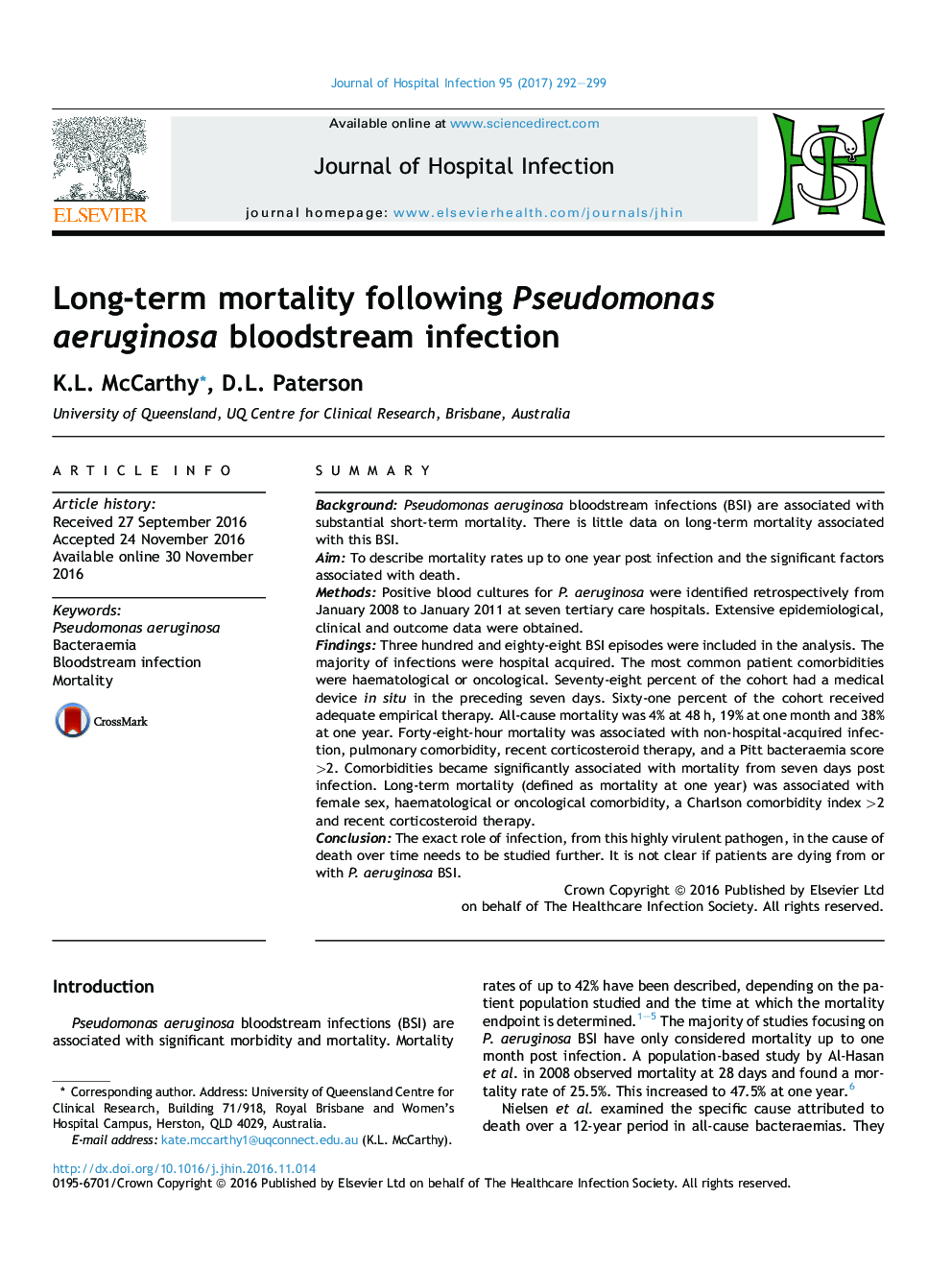| Article ID | Journal | Published Year | Pages | File Type |
|---|---|---|---|---|
| 5668293 | Journal of Hospital Infection | 2017 | 8 Pages |
SummaryBackgroundPseudomonas aeruginosa bloodstream infections (BSI) are associated with substantial short-term mortality. There is little data on long-term mortality associated with this BSI.AimTo describe mortality rates up to one year post infection and the significant factors associated with death.MethodsPositive blood cultures for P. aeruginosa were identified retrospectively from January 2008 to January 2011 at seven tertiary care hospitals. Extensive epidemiological, clinical and outcome data were obtained.FindingsThree hundred and eighty-eight BSI episodes were included in the analysis. The majority of infections were hospital acquired. The most common patient comorbidities were haematological or oncological. Seventy-eight percent of the cohort had a medical device in situ in the preceding seven days. Sixty-one percent of the cohort received adequate empirical therapy. All-cause mortality was 4% at 48 h, 19% at one month and 38% at one year. Forty-eight-hour mortality was associated with non-hospital-acquired infection, pulmonary comorbidity, recent corticosteroid therapy, and a Pitt bacteraemia score >2. Comorbidities became significantly associated with mortality from seven days post infection. Long-term mortality (defined as mortality at one year) was associated with female sex, haematological or oncological comorbidity, a Charlson comorbidity index >2 and recent corticosteroid therapy.ConclusionThe exact role of infection, from this highly virulent pathogen, in the cause of death over time needs to be studied further. It is not clear if patients are dying from or with P. aeruginosa BSI.
